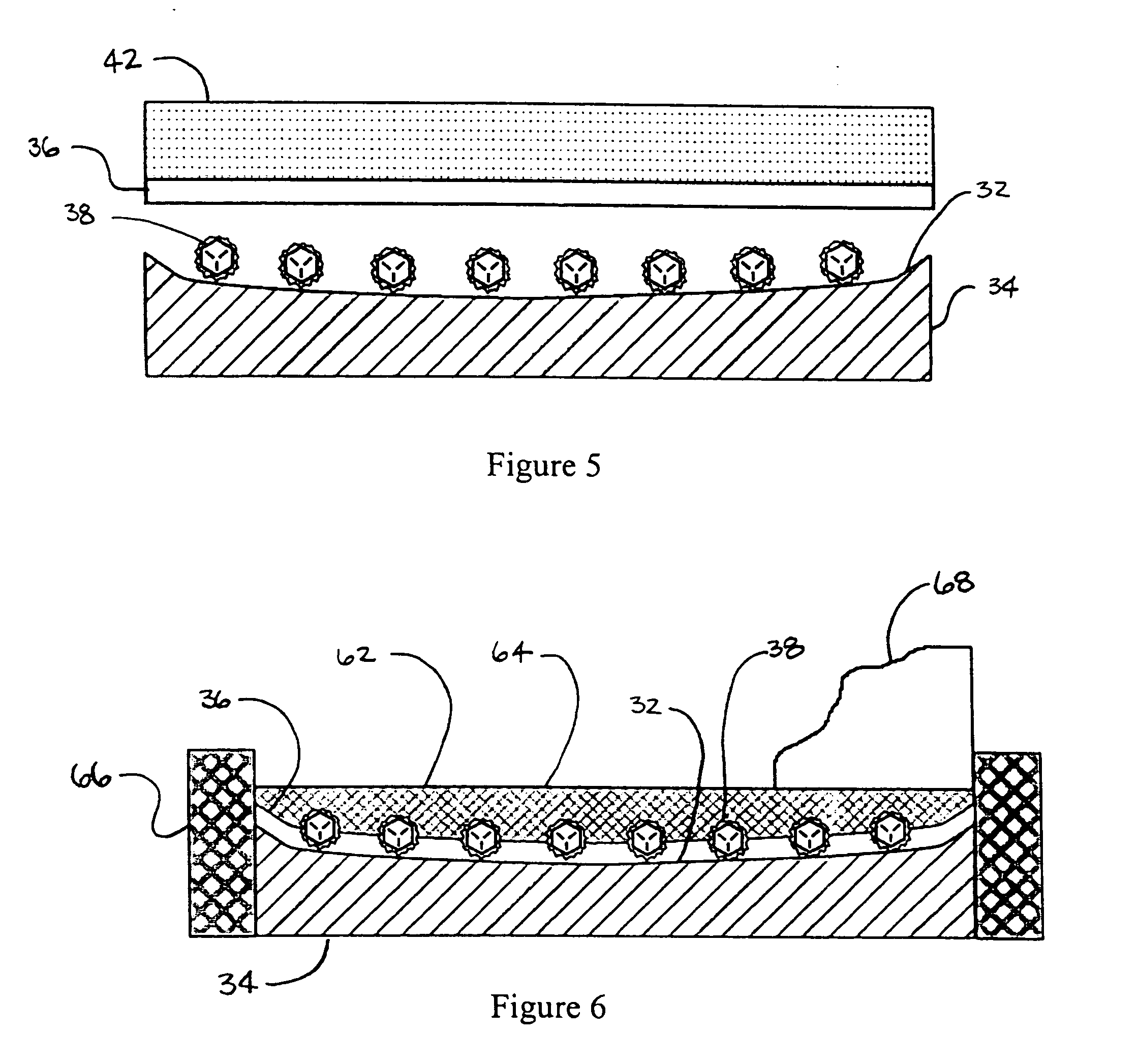Chemical mechanical polishing pad dresser
a technology of mechanical polishing and dressing pad, which is applied in the field of dressing or conditioning the device and conditioning the chemical mechanical polishing pad, can solve the problems of the pad dresser, the accumulation of polishing debris coming from the workpiece, and the inability of the pad surface to hold the abrasive particles of the slurry,
- Summary
- Abstract
- Description
- Claims
- Application Information
AI Technical Summary
Benefits of technology
Problems solved by technology
Method used
Image
Examples
example 1
[0069] Diamond grit having an average size of about 65 microns are coated with nickel by an electroless process (with hypophosphate reducing agent) to form a spiky exterior of about 130 microns. The coated diamond grit are arranged with a template to stick on a 100 mm diameter, 10 mm thick flat base plate. The coated diamond grit form a grid pattern with an inter-diamond pitch of 500 microns. The plate is placed at the bottom of a steel mold and covered with a polyimide resin powder. Subsequently, the entire assembly is pressed to 50 MPa pressure and 350° C. for 10 minutes. The polyimide consolidated plate is 7 mm thick with nickel coated diamond grit forming a grid on one side. A conventional grinding wheel with silicon carbide grit is used to grind the surface to expose the nickel coated diamond to about 60 microns. Subsequently, an aqua regia solution is used to dissolve the remaining nickel that is exposed above the polyimide resin surface. The final product is a pad conditioner...
example 2
[0070] The same procedure is followed as Example 1, however a phenolic resin is used in place of the polyimide resin, and the forming temperature is reduced to 200° C.
example 3
[0071] The same procedure is followed as Example 1, however the base plate is precoated with a layer of clay that is about 60 microns thick. After hot pressing, the clay is scraped off, exposing the nickel coated diamond protruding from the polyimide resin layer. The diamond is then exposed by etching the nickel with acid.
PUM
| Property | Measurement | Unit |
|---|---|---|
| size | aaaaa | aaaaa |
| size | aaaaa | aaaaa |
| height | aaaaa | aaaaa |
Abstract
Description
Claims
Application Information
 Login to View More
Login to View More - R&D
- Intellectual Property
- Life Sciences
- Materials
- Tech Scout
- Unparalleled Data Quality
- Higher Quality Content
- 60% Fewer Hallucinations
Browse by: Latest US Patents, China's latest patents, Technical Efficacy Thesaurus, Application Domain, Technology Topic, Popular Technical Reports.
© 2025 PatSnap. All rights reserved.Legal|Privacy policy|Modern Slavery Act Transparency Statement|Sitemap|About US| Contact US: help@patsnap.com



